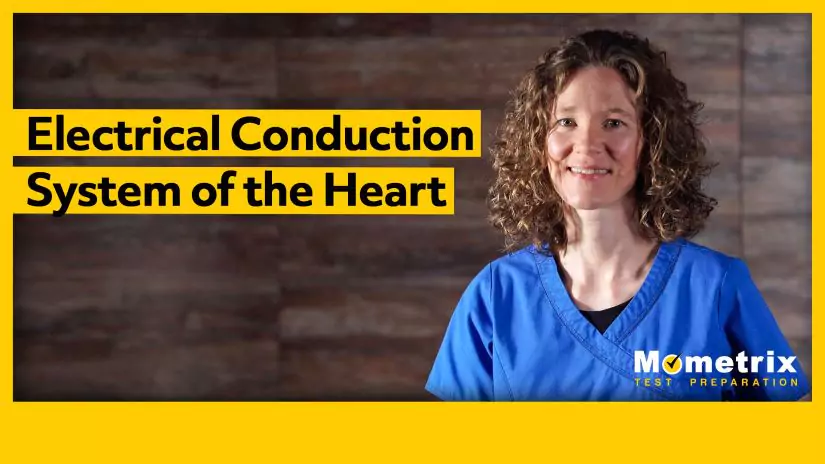
In this video, we’re going to look at how the rhythm of the heart is controlled by electrical impulses. The heart’s pumping action is regulated by an electrical conduction system that coordinates the contraction of the 4 chambers of the heart.
Remember the 4 chambers include the right atrium, right ventricle, left atrium, and left ventricle.
Components of the Conduction System
The cardiac conduction system is a group of specialized cardiac muscle cells and conducting fibers that initiate the normal cardiac cycle and coordinate the contraction of the heart muscle.
The heart’s ability to beat all starts in the sinoatrial (SA) node, which is a small mass of specialized tissue located in the atria. Depolarization (activation of the cardiac muscle) is initiated by an impulse from the SA node. The impulse spreads through the right atrium and through Bachmann’s bundle to activate the left atrium. The electrical stimulus generated by the SA node occurs 60-100 times per minute under normal conditions. Therefore, the SA node is often called the ‘natural pacemaker’ of the heart and a normal heart rhythm is called a ‘sinus rhythm.’
Once the atria are activated, the impulse moves down the internodal pathways to the atrioventricular (AV) node. The AV node functions as a critical delay in the conduction system. This delay prevents the atria and ventricles from contracting at the same time, which would cause an ineffective flow of blood through the heart.
The impulse then enters the bundle of His and is transmitted along the bundle branches. The bundle of His splits into two branches in the interventricular septum (which is just the division between the two ventricles)—the left bundle branch activates the left ventricle, and the right bundle branch activates the right ventricle.
The right and left bundle branches taper out to form many Purkinje fibers, activating the ventricular walls almost simultaneously. The ventricular activation continues from the apex back toward the base of the heart to complete the process of ventricular contraction.
Remember depolarization refers to activation of the heart muscle (contraction) and repolarization refers to the muscle cells returning to a resting state.
Here are the heart’s electrical impulse in 5 easy steps:
- The impulse leaves the SA node, signaling the atria to contract
- Travels down internodal pathways to the AV node
- Then to the bundle of His
- Where it divides into right and left bundle branches
- On to Purkinje fibers, causing the ventricles to contract
Points to Remember
SA (Sinoatrial) node
- “Pacemaker” of the heart
- Initiates atrial contraction (depolarization)
- Causes a stimulus 60-100 times per minute
- Contraction of the atria – represented by the P-wave on EKG
AV Node
- “Gatekeeper” of the heart – functions as a slight delay to allow all blood from the atria to empty into the ventricles and prevent any backflow.
- Beats at 40-60 bpm
Bundle of His
- Branches off into Right and Left bundles to the Purkinje fibers
- Causes depolarization (contraction) of ventricles
- Purkinje fibers fire at a rate of 20-40 bpm
- Contraction of the ventricles is shown as the QRS complex on EKG
And finally, the ventricles must return to their resting state, which is called ventricular repolarization and is represented as the T-wave on the EKG.

